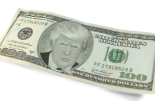Payden & Rygel: Global Bond Markets
Payden & Rygel: Global Bond Markets

The global asset management firm Payden & Rygel recently held a briefing on global bond markets. Global Credit Strategist Timothy Crawmer discussed how current economic conditions are influencing the firm’s investment decisions. Here are some excerpts from that briefing.
We expect a Fed cut in September, but also believe that the Fed will not cut as much or as quickly as the market is currently pricing in.
The environment remains positive for credit.
- Companies have used a period of strong earnings to pay down debt and strengthen balance sheets.
- Strong investor demand and limited new supply have kept valuations high.
- Spreads are narrow and likely to remain that way for the foreseeable future.
- Opportunities will arise—like the widening in high yield spreads this August—and it’s important to have the flexibility to take advantage of them.
Against this backdrop, we are positioning portfolios as follows:
- Durations are close to neutral.
- We are emphasizing high-yield bonds over leveraged loans, because of their higher credit quality and fixed rate structure, which will offer value if rates decline.
- Both developed countries and emerging markets global corporates are attractive. European corporate markets held up a lot better than the US, especially in early August when we saw that a off in the US. This has resulted in some compression between the two markets presenting an opportunity to shift exposure from Europe into the US.
- Demand for investment grade corporates is strong, but inflation fears have kept some key players out of the market. As inflation fears continue to recede, the remaining holdouts may increase their allocation to investment grade corporates.
- Spread compression between rating quality buckets has created opportunity to move up in quality without sacrificing significant incremental spread. We favor BBB investment grade and BB non-investment grade corporate bonds.
Rate cuts are already priced in, so duration positioning is neutral
Tim Crawmer: When we think about investing in fixed income, we believe in the soft landing scenario where inflation is coming down, central banks are able to cut, and the markets continue to rally as they can see an easing trajectory for central bank policy. That lays out a pretty rosy picture for credit investing.
Before I get into the credit positioning, let’s talk about interest rate and duration positioning. A lot of those rosy expectations are priced into central bank expectations. In the Eurozone, we’ve got six to eight cuts priced in by the middle of next year. In the US, we've got pretty close to the same number of cuts priced in. So market participants expect a lot of easing ahead from central banks.
We've seen interest rates come down significantly across the curve to reflect that over the last month, especially given the softer inflation and jobs numbers. If you think back to October of last year when the Fed started to signal that they were looking to potentially cut rates to January, within that time frame you saw the market price in about six to seven cuts, and then the market took out those six to seven cuts.
So you got a pretty defined range in interest rates between 3.60% on the 10-year for the lows, and all the way out to 4.60% at the highs for the 10-year in February-March of this year. We're at the lower end of that range at 3.80% area on the 10-year now. We think that's pretty fair value from an interest rate point of view right now given the data we have received so far.
As a result, we're keeping interest rate duration pretty close to home versus benchmarks with a slight preference to be long. This long preference is mainly a hedge to credit risk exposure in portfolios, because if we did see a surprise recession or hard landing globally, you would see credit spreads wide and you’d expect short-term government bond rates in particular to come down significantly. In that scenario you do want to have a little bit of protection on in the portfolio from an interest rate duration perspective, so we are a little bit long because of that in portfolios.
Credit fundamentals, technical indicators and valuations are positive
Starting off with fundamentals, there are a lot of good things going on for credit issuers. Corporations have been able to strengthen their balance sheets with the stronger than expected GDP and corporate earnings that they've seen come through over the last couple of years. They also haven't been aggressive from a debt perspective.
Rates have been higher, so they haven't been conducting debt holder unfriendly actions like dividend recaps, big LBOs, or mergers and acquisitions that would increase their debt burden. They've instead been prudent with their debt burden. Therefore, these companies are sitting in a good place, because they've grown earnings and reduced debt.
The technicals are also very strong. Lots of investors want to buy fixed income right now because of the higher yields. They see inflation coming down, and they want to lock in those higher yields and buy fixed income right now. We're seeing a lot of flows into fixed income asset classes, and the technicals are strong given the fact that these companies aren't raising a lot of debt so the supply isn't growing enough to meet the increased demand.
Valuations are reflecting a lot of these positive attributes for credit markets. We are sitting at the tighter end of the range for spreads, but we think that the fundamental and technical side of the equation will be able to keep valuations at these current levels, and you'll get that positive carry benefit of being long credit markets at current levels.
Opportunistic opportunities will arise
We got an opportunity in early August when risk markets sold off and high yield moved from a 300-option adjusted spread level out to 400-option adjusted spread level. We added to high yield in the portfolio in response. Why? We don't see a scenario where high yield is going to go significantly above 400 and start pricing in a big jump in default rates. From a fundamental perspective, we don't see any signs that are going to lead to the default rate going up significantly. And you would have to see that default rate go up to sustain high yield spreads above the 400 level.
You want to be able to take advantage of those opportunities when they present themselves, but still be long credit risk in portfolios to benefit from that enhanced carry that you get there.







